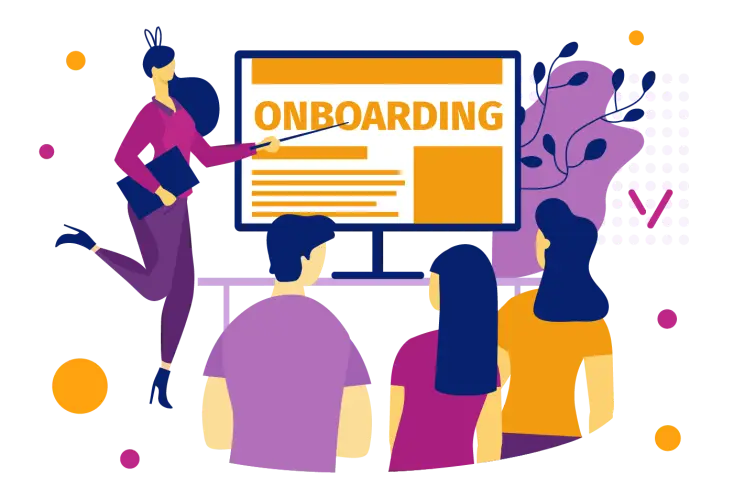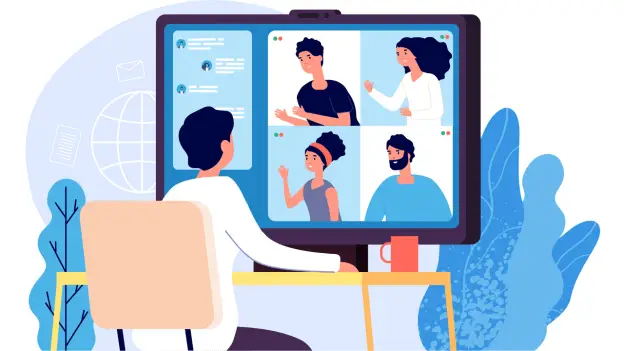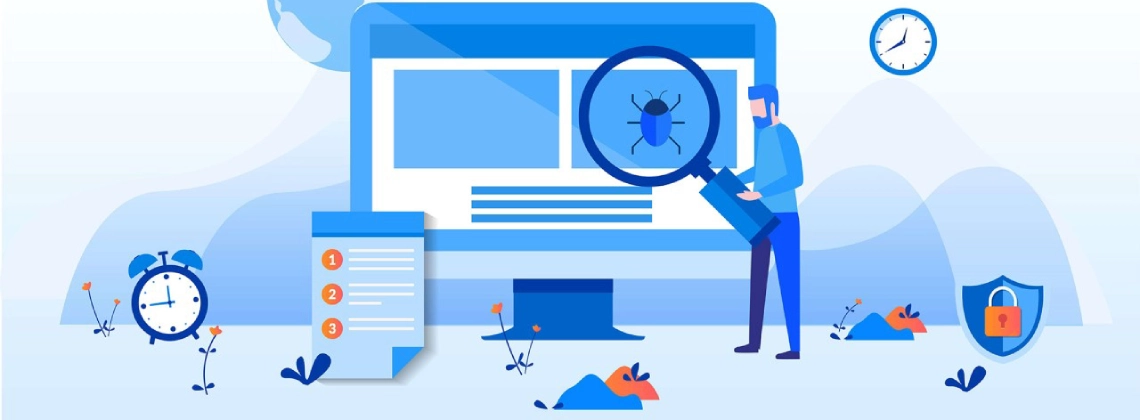Before a new employee crosses the threshold of the office, thorough preparation is important. Strategic planning is not just laying out documents on a table or instructions on workstations. It's about analyzing and understanding the individual needs of the person joining your team. Where to start? First, it is worth making an orientation plan, which includes familiarization with the corporate culture, colleagues, as well as a detailed description of work processes and projects in which the newcomer will participate.

Don't forget about personalization. Nice touches like an employee's name on the door or a personalized welcome letter can make a big impact. They not only show that the company cares, but also help to create a sense of belonging from the very beginning. Technology readiness is also key: ensure all necessary devices and software are configured and ready to go.
The next chapter will show you how to turn a new employee's first day into an unforgettable experience that lays the foundation for future achievements.
The first day in the office: creating an unforgettable impression
The first day at a new company can be a turning point for a newcomer, but if properly planned, it can leave a lasting impression. A personal greeting from the management team and future colleagues not only warms, but also strengthens the feeling of value in the eyes of the new employee. How else can you make this day special? It is important to organize an interactive introduction to the team, which can include short meetings or casual coffee breaks where the newcomer has the opportunity to get to know everyone in an informal setting. 
Organization of the workplace is no less important. It should be ready for the newcomer's arrival, with all the necessary tools and resources, and include welcome notes or gifts with the company logo. Such details make the first day not just a formality, but also demonstrate the culture and style of your IT company.
Are you ready to learn how an orientation period and training can enhance the impact from day one? Read on and we'll reveal the keys to effectively onboarding new members of your team.
"The first impression in the work environment is crucial. It sets the tone for how others perceive you and can significantly impact your professional relationships and growth opportunities." - Industry Expert
Familiarity and training: the key to effective adaptation
After the first day has left a positive impression, orientation and training play a crucial role in the onboarding of a new employee. Why is this necessary? This stage allows newcomers to immerse themselves in their professional duties, understand the company's internal processes and values. A comprehensive approach to learning, which combines theoretical knowledge and practical experience, allows you to absorb information more deeply and achieve work efficiency faster.

Special attention should be paid to the individual training schedule, because each employee is unique and has his own pace of learning the material. It is also important to provide access to resources for self-directed learning, allowing employees to develop at their own pace. The use of interactive tools, such as virtual simulators or game modules, can significantly increase interest and ensure more effective assimilation of information.
Ready to learn more about the key activities every IT professional should go through during orientation? Don't miss the next section, where we'll break it down.
- Getting to know the company's corporate culture and values.
- Detailed review of internal processes and work regulations.
- Instruction in the use of specialized software.
- Cyber security and information protection trainings.
- Familiarization with project management and development methodologies.
- Sessions on teamwork and interpersonal skills development.
- Study of the company's products and their key functions.
- Participation in real projects under the supervision of an experienced mentor.
- Independent performance of small tasks to consolidate knowledge.
- Regular feedback to track progress and adjust the curriculum.
Mentoring and Support: Mentoring for IT Newbies
Successful IT onboarding is not limited to training and orientation. Mentoring and support systems play a key role in the smooth transition of newcomers to independent work. When an experienced mentor takes the time to answer questions, share knowledge and provide constructive advice, it creates a safe environment for learning and development.
A mentor can help navigate complex projects, promote understanding of corporate policies, and act as a link between the newcomer and the rest of the team. From the mentor's personal experience, new employees can learn the nuances of the work process that cannot be found in any manual.
In addition, it is important to have a regular support system that does not end after the first weeks of adjustment. This can be a combination of one-on-one meetings, team lunches, or even group brainstorming sessions where employees can share successes and challenges.
Interested in strategies for integrating new employees into the team? The next chapter will reveal how to build a strong and cohesive IT family.

Integration into the team: how to become part of the IT family
Integrating new employees into a team requires more than just training or mentoring; it's about making a connection. Team building activities such as workshops or corporate events can be a great start. Activities aimed at joint problem solving help not only to improve professional skills, but also contribute to the formation of personal connections between team members.

Openness in communication is equally important. Creating an atmosphere where new employees can freely express their thoughts and ideas encourages them to feel like a valued part of the team. Regular one-on-one meetings with management also ensure a personal approach and recognition of everyone's contribution.
The final emphasis is on social integration. Joint lunches, coffee breaks, or informal meetings outside the workplace allow you to establish friendly relations, which is the foundation for a strong IT community.
Now that we've covered the basic integration strategies, are you ready to move on to the next step? Consider how ongoing support and development can lead to the professional growth of a new employee.
Continuous support and development: the path to professional growth
Employee adaptation is not the finish line, but only the starting line in the marathon of professional growth. Constant support and development opportunities are what help talents flourish. In the dynamic world of IT, access to fresh courses, certifications and trainings is a necessity. This enables employees to not only keep their skills up to date, but also stay ahead of changes in technology.
The value of individual career planning cannot be overestimated. Developing personalized growth paths reflects a company's investment in its employees and their future. When a company invests resources in developing the leadership qualities of its employees, it not only develops future managers, but also creates a culture of mutual respect and mutual support.
Are you ready to learn how evaluation and feedback can strengthen this dynamic and contribute to both the growth of employees and the development of the company itself? The next chapter will unveil these strategies.

- Upskilling: Continuous support systems provide an opportunity to acquire new knowledge and skills that increase productivity.
- Professional growth: Organizations can promote career growth by providing tools for development and new challenges.
- Increased motivation: Ongoing support shows investment in employee development, increasing their motivation.
- Costs: Implementing and maintaining such systems can be costly for organizations.
- Time costs: It takes time and effort to participate in training activities, which can affect short-term productivity.
- Resistance to change: Some employees may resist participating in support systems if they are satisfied with their skills.
Assessment and Feedback: The Importance of Feedback in Onboarding
Evaluation and feedback in onboarding are two powerful tools that ensure dynamic growth and efficiency improvement, both for employees and for the company. Through regular assessments, companies can identify newcomers' strengths and help them address any weaknesses early on. 
Constructive feedback creates a platform for open dialogue where employees can express their opinions and feel that their work is valued. This not only increases morale and job satisfaction, but also encourages continuous self-improvement. Moreover, feedback from new hires can point to potential areas for improvement in the company's onboarding process itself.
Ready to dive deeper into feedback collection methods and their impact? The next section will explore these strategies and summarize the value of feedback in onboarding.
| Feedback collection method | Description | Impact on onboarding |
|---|---|---|
| Built-in surveys | Surveys integrated into the product that are activated at critical moments of onboarding. | Provide immediate insight into user experience and process improvement. |
| Individual interviews | One-on-one interviews with users to collect quality feedback. | Provide in-depth user experience analysis that can influence onboarding optimization. |
| Behavioral analytics | Analysis of data on user interaction with the onboarding process. | Provides objective feedback to identify and correct weaknesses. |
| User testing | Observing user interaction with the onboarding process and collecting feedback. | Provides actionable feedback for immediate process improvement. |
The importance of feedback in the onboarding process cannot be underestimated. It is not just a communication tool - it is the foundation on which the successful integration of a new employee into the company is built. Feedback helps newcomers clearly understand their roles and responsibilities, and enables them to identify areas for improvement and direct their efforts accordingly.
It's also about engagement and motivation: when new employees receive regular feedback, they feel their work is valued and their contribution is important to the company. This increases their motivation and commitment to the organization, creating a positive onboarding experience and laying the foundation for long-term success.
Last but not least, relationship building plays a role: feedback fosters open communication and trust between newcomers and their managers or mentors, creating a supportive environment where they can feel comfortable seeking advice and guidance.
In the next section, we will talk about frequently asked questions that you may have about onboarding in the IT industry of Ukraine. These answers will help you understand how to better prepare and what to expect from this critical process.
Frequently asked questions about onboarding in the IT industry of Ukraine
What are the first steps to take before a new employee joins an IT company?
Before a new employee joins an IT company, it is important to send a welcome letter, prepare necessary documents, set up technical equipment, create an onboarding schedule, inform the team and prepare the workplace.
What is included in the orientation period for newcomers to IT?
The familiarization period for newcomers to IT includes orientation sessions, training in the company's products, familiarization with the corporate culture, as well as the first tasks for practical application of skills.
What mentoring strategies are useful for new employees in IT?
Useful mentoring strategies for new IT employees include a one-on-one approach, regular meetings to discuss progress, and providing feedback for quick onboarding.
How to ensure effective integration of a newcomer into the IT team?
Effective integration of a newbie into an IT team requires clear task planning, facilitating communication and regular involvement in team events and meetings.
What assessment and feedback methods are effective during onboarding?
Effective evaluation and feedback methods during onboarding include anonymous surveys, 360-degree feedback, face-to-face interviews, and task performance analysis.




